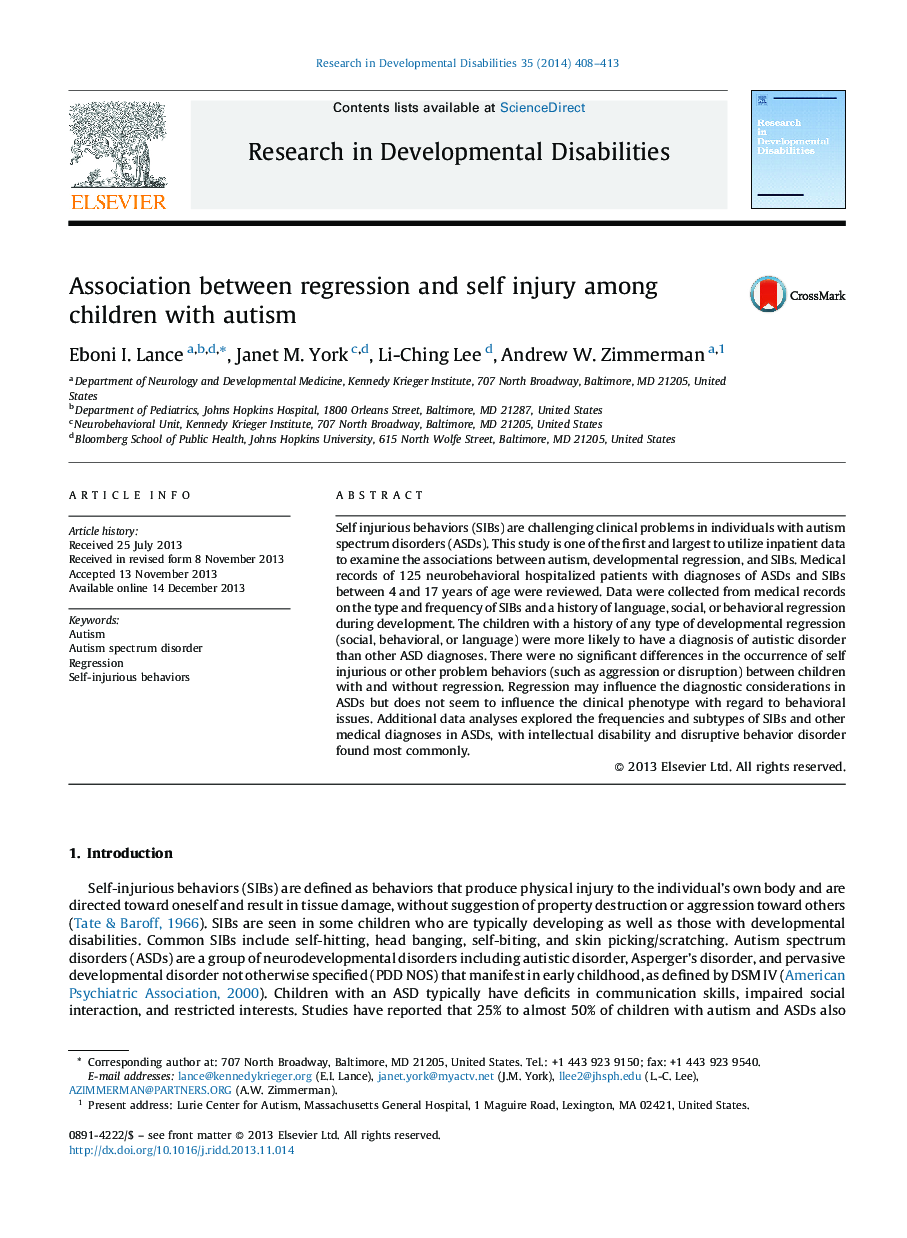| کد مقاله | کد نشریه | سال انتشار | مقاله انگلیسی | نسخه تمام متن |
|---|---|---|---|---|
| 371423 | 621923 | 2014 | 6 صفحه PDF | دانلود رایگان |
• Children with a history of developmental regression were more likely to have autistic disorder than other diagnoses within the autistic spectrum.
• No difference in the occurrence of self injury between children with or without regression.
• No differences in other problem behaviors between children with or without regression.
Self injurious behaviors (SIBs) are challenging clinical problems in individuals with autism spectrum disorders (ASDs). This study is one of the first and largest to utilize inpatient data to examine the associations between autism, developmental regression, and SIBs. Medical records of 125 neurobehavioral hospitalized patients with diagnoses of ASDs and SIBs between 4 and 17 years of age were reviewed. Data were collected from medical records on the type and frequency of SIBs and a history of language, social, or behavioral regression during development. The children with a history of any type of developmental regression (social, behavioral, or language) were more likely to have a diagnosis of autistic disorder than other ASD diagnoses. There were no significant differences in the occurrence of self injurious or other problem behaviors (such as aggression or disruption) between children with and without regression. Regression may influence the diagnostic considerations in ASDs but does not seem to influence the clinical phenotype with regard to behavioral issues. Additional data analyses explored the frequencies and subtypes of SIBs and other medical diagnoses in ASDs, with intellectual disability and disruptive behavior disorder found most commonly.
Journal: Research in Developmental Disabilities - Volume 35, Issue 2, February 2014, Pages 408–413
